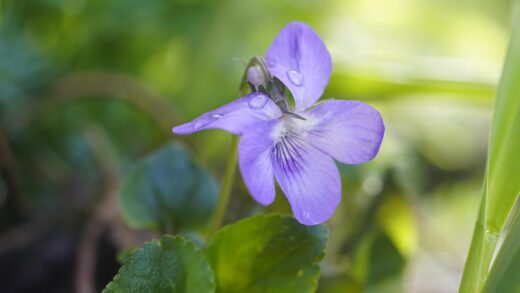The process of planting and propagating gladiolus is a fundamental aspect of cultivating these elegant flowers, ensuring their return and proliferation year after year. Successful planting begins with the careful selection of high-quality corms and the meticulous preparation of the garden bed. The timing of planting is crucial, as it must be coordinated with the local climate to avoid frost damage to the emerging shoots. Propagation, the method by which new plants are created, allows gardeners to expand their collection and share their favorite varieties. Understanding the correct techniques for both planting and propagation is essential for achieving a robust stand of gladioli that will produce stunning spires of color throughout the summer months.
The selection of healthy corms is the first and most critical step in the planting process. When purchasing gladiolus corms, look for those that are plump, firm, and free from any soft spots, blemishes, or signs of disease. The size of the corm is also a good indicator of the quality of the flowers it will produce; larger corms, typically those with a diameter of 4 centimeters or more, will generally yield taller flower spikes with more numerous and larger blooms. It is also important to inspect the basal plate at the bottom of the corm, ensuring it is intact and shows no signs of rot.
Once high-quality corms have been acquired, the focus shifts to preparing the ideal planting site. Gladioli thrive in locations that receive full sun and have well-drained, fertile soil. Before planting, the soil should be worked to a depth of at least 30 centimeters, breaking up any clumps and removing rocks or weeds. Incorporating a generous amount of organic matter, such as compost or well-rotted manure, will improve the soil’s texture, drainage, and nutrient content. A balanced, slow-release granular fertilizer can also be mixed into the soil at this time to provide the necessary nutrients for the initial growth phase.
The depth and spacing of the corms during planting are critical for the future stability and health of the plants. A general guideline is to plant the corms at a depth of approximately four times their vertical diameter, which is typically between 10 and 15 centimeters deep. Planting them at this depth helps to anchor the tall stems and prevents them from toppling over. The corms should be spaced about 15 to 20 centimeters apart to allow for adequate air circulation, which is vital for preventing the spread of fungal diseases. The corms should be placed with the pointed side facing up, as this is where the shoot will emerge.
Timing the planting
The timing of planting is a crucial factor that can significantly influence the success of gladiolus cultivation. Planting too early can expose the newly emerging shoots to late spring frosts, which can cause significant damage or even kill the young plants. Conversely, planting too late in the season may not allow enough time for the plants to mature and produce flowers before the onset of cooler autumn weather. Therefore, determining the optimal planting window for your specific climate zone is essential for a healthy and productive growing season.
The primary rule for timing the planting of gladiolus corms is to wait until all danger of frost has passed in the spring. A good indicator is when the soil temperature, measured at the planting depth, has consistently reached at least 13°C. This ensures that the soil is warm enough to stimulate the corms to break dormancy and begin root development without the risk of being set back by cold temperatures. Monitoring local weather forecasts and being familiar with the last average frost date for your region are key to making this decision.
For a prolonged blooming period throughout the summer, a technique known as succession planting is highly effective. Instead of planting all the corms at once, the planting can be staggered. Starting after the last frost date, plant a new batch of corms every two weeks. This practice can be continued into early summer, typically until about 90 days before the first expected autumn frost. Each successive planting will mature and bloom at a slightly later time, resulting in a continuous display of fresh gladiolus flowers from mid-summer until the first frosts of fall.
In regions with very long, hot summers, it is also important to consider the impact of extreme heat on flowering. While gladioli are sun-loving plants, excessively high temperatures can sometimes stress the plants and affect bloom quality. In these climates, it may be advantageous to time the main planting so that the peak blooming period avoids the most intense heat of mid-summer. This might mean planting as early as possible in the spring and potentially having a second, later planting for an autumn bloom as temperatures begin to moderate.
Soil preparation for planting
Thorough soil preparation is a non-negotiable prerequisite for growing healthy and vigorous gladiolus plants. The quality of the soil directly impacts root development, nutrient uptake, and water drainage, all of which are critical for the overall performance of the plant. Gladioli perform best in a soil that is loose, fertile, and exceptionally well-draining. Taking the time to properly amend and prepare the garden bed before planting the corms will pay significant dividends in the form of stronger plants and more spectacular flowers.
The first step in soil preparation is to assess and improve its structure. Gladioli are intolerant of heavy, compacted clay soils, which retain too much moisture and can lead to corm rot. To improve heavy soils, incorporate a generous amount of organic matter. Materials like compost, aged cow manure, peat moss, or leaf mold will help to loosen the soil structure, creating more air pockets and improving drainage. For sandy soils, which drain too quickly and are often low in nutrients, the addition of organic matter will help to improve moisture and nutrient retention.
The next consideration is soil fertility and pH. Gladioli prefer a slightly acidic to neutral soil pH, ideally between 6.0 and 7.0. It is highly recommended to conduct a soil test to determine the current pH and nutrient levels. Based on the results, you can make targeted amendments. If the soil is too acidic, lime can be added to raise the pH. If it is too alkaline, sulfur can be incorporated to lower it. A balanced, all-purpose granular fertilizer, such as a 5-10-10 or 10-10-10 formulation, can be worked into the soil before planting to ensure the plants have access to essential nutrients from the start.
Finally, the planting area should be thoroughly cultivated. The soil should be loosened to a depth of at least 30 centimeters. This deep tilling ensures that the roots can easily penetrate the soil and establish a strong network, which is necessary to support the tall plant and to access water and nutrients from a larger volume of soil. After amending and tilling, the soil surface should be raked smooth to create a fine, even seedbed. This meticulous preparation creates the ideal foundation for the gladiolus corms to thrive.
Propagation from cormels
Propagation is the process of creating new plants, and for gladiolus, the most common and effective method for home gardeners is through the cultivation of cormels. Cormels are small, new corms that form at the base of the mature “mother” corm during the growing season. Each of these cormels has the potential to grow into a new, genetically identical plant. Propagating from cormels is an excellent way to increase your stock of a favorite variety or to produce a large number of plants for mass plantings.
The process begins in the autumn when the gladiolus corms are lifted from the ground for winter storage. After the corms have been cured for a few weeks, you will notice the small cormels clustered around the base of the new, large corm. These can be carefully separated from the parent corm. The cormels are covered in a hard, protective shell, or husk, which must be addressed before planting. This hard coating can inhibit germination, so it is often beneficial to either soak the cormels in warm water overnight or carefully peel off the husk before planting in the spring.
Planting cormels is slightly different from planting mature corms. Because of their small size, they should be planted in a dedicated nursery bed or in a specific, marked row where they can grow undisturbed for a season or two. Plant the cormels about 2 to 5 centimeters deep and about 5 to 8 centimeters apart. They should be planted at the same time you would plant the larger corms, after the danger of frost has passed. Consistent moisture and a weed-free environment are crucial for their development.
It is important to have patience when propagating from cormels, as they will not typically produce flowers in their first year of growth. During the first season, the cormel will focus all of its energy on developing a strong root system and foliage, and it will grow into a larger, but still non-flowering, corm. This new corm should be lifted and stored over winter just like the mature corms. Depending on the variety and growing conditions, it may take two to three years of this cycle before the corm reaches a sufficient size to produce its first flower spike.
Division of corms
While the primary method of propagation is through cormels, it is also possible to propagate gladiolus through the division of large, mature corns. This method is less commonly used by home gardeners but can be an effective way to quickly multiply a specific variety, especially if the corm is exceptionally large and has multiple distinct growing points, or “eyes.” Division should be done with care, as improper cutting can damage the corm and introduce disease.
The best time to divide a gladiolus corm is in the spring, just before planting. The corms should have been properly stored over the winter and should be firm and healthy. Inspect the top of the corm for the small, pointed buds or growing points. A large, healthy corm may have two or more of these. If the corm is large enough to be divided and still leave a substantial piece for each growing point, it is a candidate for division.
To divide the corm, use a sharp, sterile knife. The cleanliness of the tool is paramount to prevent the transmission of diseases. Make a clean cut through the corm, ensuring that each resulting section has at least one healthy growing point and a portion of the basal plate at the bottom, from which the new roots will emerge. A section without a growing point will not sprout, and a section without a piece of the basal plate will not be able to form roots.
After cutting, it is highly recommended to treat the cut surfaces with a fungicide powder. This helps to prevent rot and other fungal infections from entering the wounded tissue. Allow the cut surfaces to air dry and callous over for a day or two in a well-ventilated location before planting. Once calloused, the divisions can be planted in the same manner as whole corms, ensuring they are placed at the correct depth and spacing to support their future growth.


















